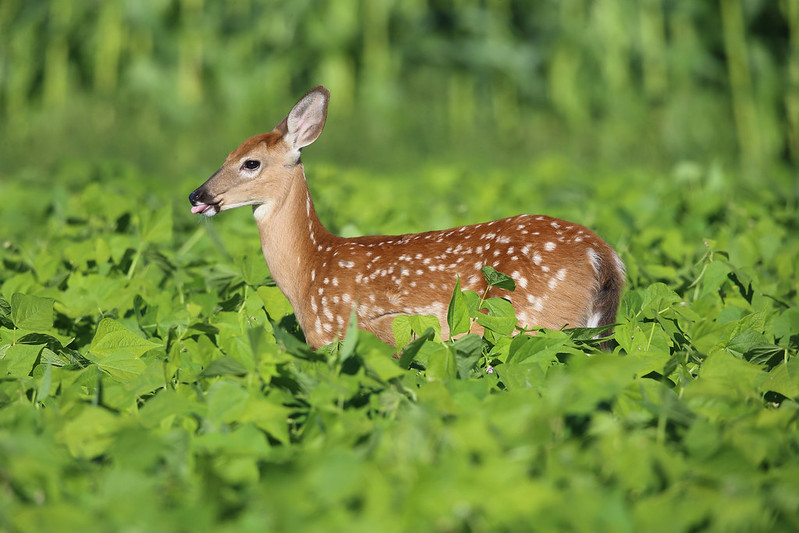Image credit: Photo by Tom Murray. CC-BY-NC.
Researchers at Penn State recently found evidence that the SARS-coV-2 B.1.1.529 Omicron variant spread from humans to white-tailed deer and is now circulating among the deer population in Staten Island, New York (1). Zoonotic diseases, or those that pass from animals to humans, make up more than 75% of all human diseases (2). Zoonoses can originate in wild animal populations and spill over to humans, as SARS-CoV-2 is believed to have done (3), but they can also be transmitted back to animal populations from humans, as this white-tailed deer study suggests is the case for SARS-CoV-2. While the original animal host of SARS-CoV-2 remains unknown (3), emerging evidence that the virus is spilling back over into animals is cause for alarm. The results of the Penn State study, which is currently under peer-review, are raising concerns that white-tailed deer could become reservoir hosts for SARS-CoV-2, effectively hosting and circulating the virus, creating the opportunity for more variants (4).
Throughout the COVID-19 pandemic, many researchers have examined the potential for coronavirus infections in animals. Outbreaks of coronavirus among farmed mink populations across Europe and the United States have been widely documented (5,6). In addition, previous studies have shown the transmissibility of earlier SARS-CoV-2 variants among white-tailed deer populations in 13 different states (4). In late 2020 and early 2021, the same Penn State researchers found that more than 80% of the white-tailed deer population in Iowa and parts of Ohio were positive for the same SARS-CoV-2 variants circulating through the human population at the time (7). However, the most recent Penn State study represents the first time the omicron variant has been detected in a wild animal population (4). The deer themselves mostly exhibit asymptomatic infections (8), which make them a perfect reservoir host to incubate the virus over long periods of time.
Although there is no evidence yet that infected deer populations can transmit the virus to humans (4,7), the possibility should not be overlooked. Viruses that circulate within wild animal populations are extremely difficult to monitor and control (8). If the virus continues to circulate widely in the deer population, the virus will likely learn to adapt and evolve over time, potentially mutating into more transmissible and deadly variants that could infect the human population (4,7).
These findings indicate that improved surveillance of SARS-CoV-2 transmission among wild animal populations is urgently needed, as the number of species vulnerable to infection seems to be increasing (6). Identifying and monitoring reservoir species can be extremely useful for predicting future human outbreaks or for detecting new, emerging variants of certain viruses. As SARS-CoV-2 continues to circulate among the human population, monitoring the spread of the virus in animal populations might become a key piece to preventing the next major outbreak.
References
1. https://www.biorxiv.org/content/10.1101/2022.02.04.479189v1.full.pdf
2. https://www.cdc.gov/onehealth/basics/zoonotic-diseases.html
3. https://www.nytimes.com/2022/02/07/health/coronavirus-deer-animals.html
4. https://www.nytimes.com/2022/02/07/health/omicron-deer-staten-island-covid.html
5. https://www.nationalgeographic.com/animals/article/what-the-mink-coronavirus-pandemic-has-taught-us
6. https://www.nytimes.com/2022/01/19/magazine/spillback-animal-disease.html
7. https://www.psu.edu/news/research/story/deer-may-be-reservoir-sars-cov-2-study-finds/
8. https://www.vox.com/science-and-health/22904422/covid-pandemic-deer-animals-spillover-spillback


